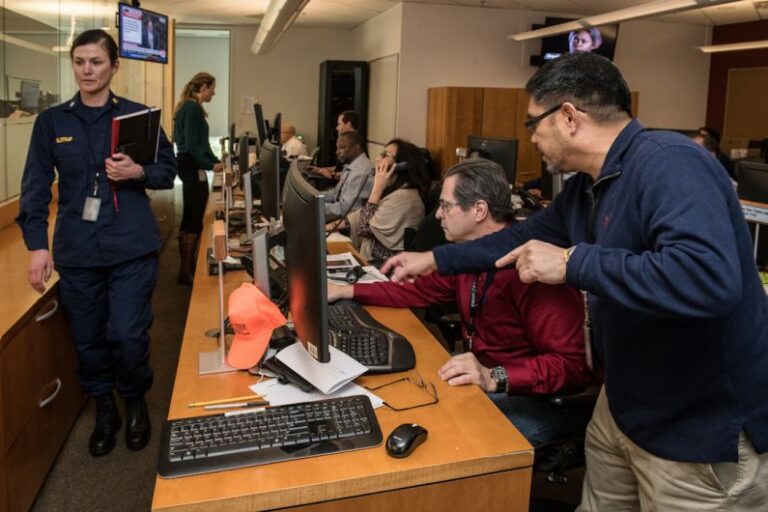Effective Communication: the Cornerstone of Leadership
In the realm of leadership, one skill stands out above all others as a critical foundation for success: effective communication. The ability to communicate clearly, persuasively, and empathetically is what sets great leaders apart from the rest. Leaders who master the art of communication can inspire their teams, navigate challenges with grace, and drive their organizations toward success. In this article, we will explore the importance of effective communication in leadership and how it can be honed to achieve optimal results.
The Power of Clear Communication
Clear communication is the bedrock upon which effective leadership is built. When a leader is able to articulate their vision, goals, and expectations clearly, it creates a sense of direction and purpose for their team. Clear communication ensures that everyone is on the same page, working toward a common objective. It prevents misunderstandings, reduces errors, and fosters a culture of transparency and trust within the organization.
Leaders who communicate clearly are able to inspire confidence in their team members. By presenting information in a straightforward and understandable manner, they make it easier for their team to grasp complex concepts and make informed decisions. Clear communication also enables leaders to provide constructive feedback and guidance, helping team members grow and develop professionally.
The Role of Persuasive Communication
Persuasive communication is another essential aspect of effective leadership. Leaders must be able to influence and persuade others to buy into their ideas, strategies, and plans. By employing persuasive communication techniques such as storytelling, using compelling data, and appealing to emotions, leaders can rally support for their vision and motivate their team to take action.
Persuasive communication is particularly crucial in times of change or uncertainty. During periods of transition, leaders must be able to communicate a compelling narrative that inspires hope and confidence in the future. By framing challenges as opportunities for growth and transformation, leaders can help their team members embrace change and adapt to new circumstances with resilience.
The Importance of Empathetic Communication
Empathetic communication is the secret weapon of effective leaders. By demonstrating empathy and actively listening to their team members, leaders can build strong relationships based on trust and mutual respect. Empathetic leaders understand the perspectives and feelings of others, which allows them to tailor their communication style to be more inclusive and supportive.
Empathetic communication also enables leaders to resolve conflicts and address issues in a constructive manner. By showing understanding and compassion, leaders can de-escalate tense situations and foster a culture of open dialogue and collaboration. When team members feel heard and valued, they are more likely to engage fully in their work and contribute their best efforts towards achieving shared goals.
Developing Your Communication Skills
Like any skill, effective communication can be developed and honed through practice and deliberate effort. Leaders looking to enhance their communication skills can benefit from seeking feedback from trusted colleagues or mentors, taking communication training courses, and studying successful communicators in their field.
One powerful technique for improving communication is active listening. By focusing on what others are saying, asking clarifying questions, and paraphrasing to ensure understanding, leaders can demonstrate their interest and respect for their team members’ perspectives. Active listening also helps leaders cultivate empathy and build stronger connections with their team.
Another key aspect of effective communication is nonverbal cues. Body language, facial expressions, and tone of voice can convey as much meaning as words themselves. Leaders should pay attention to their nonverbal communication to ensure that it aligns with their intended message and reinforces a sense of trust and authenticity.
Incorporating Technology in Communication
In today’s digital age, leaders have access to a wide range of communication tools and technologies that can enhance their effectiveness. From video conferencing platforms to project management software to social media channels, technology offers new opportunities for leaders to connect with their teams and stakeholders in meaningful ways.
Virtual communication tools can bridge geographical barriers and enable remote teams to collaborate effectively. Leaders can use video conferencing for face-to-face meetings, instant messaging for quick updates, and project management software for tracking progress and deadlines. By leveraging technology thoughtfully, leaders can streamline communication processes, increase efficiency, and keep their teams aligned and engaged.
Conclusion: Mastering the Art of Communication
Effective communication is the cornerstone of leadership, shaping how leaders inspire, influence, and connect with their teams. By mastering the art of clear, persuasive, and empathetic communication, leaders can build trust, foster collaboration, and drive their organizations toward success. Developing strong communication skills is an ongoing process that requires practice, feedback, and a willingness to learn and adapt.
Leaders who prioritize communication as a core competency will find themselves better equipped to navigate challenges, inspire their teams, and achieve their strategic objectives. By honing their communication skills and incorporating technology to enhance their reach, leaders can create a culture of open dialogue, innovation, and growth within their organizations. Effective communication isn’t just a skill—it’s a superpower that can elevate leaders to new heights of success and impact.






